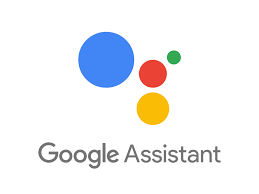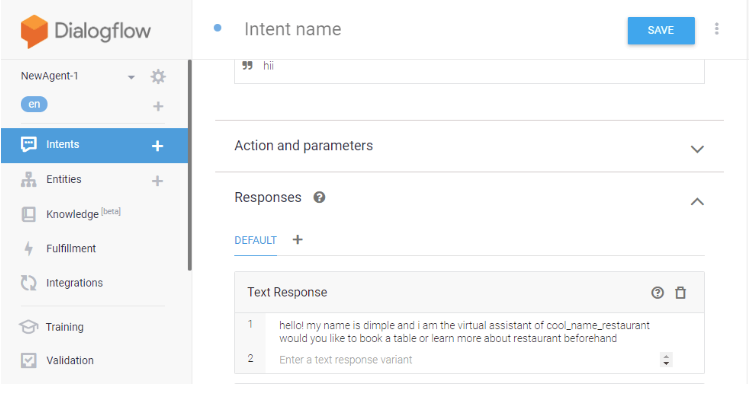Let's Discuss
Enquire NowIn today’s world, voice assistants have become ubiquitous in our daily lives, from our homes to our cars, and even in our pockets. With the increasing popularity of voice assistants like Amazon Alexa and Google Assistant, businesses are now looking to integrate their services with these platforms to create a more natural and seamless experience for their users. In this blog post, we will discuss how to integrate Dialogflow with voice assistants like Amazon Alexa and Google Assistant.
What is Dialogflow?
Dialogflow is a powerful platform that allows businesses to build conversational interfaces for their users. With Dialogflow, you can create chatbots, voice assistants, and other conversational experiences that can interact with your users in a natural and intuitive way.
Dialogflow provides a range of features and tools to create conversational interfaces, including intent recognition, entity recognition, and natural language processing. By using Dialogflow, businesses can create chatbots and voice assistants that can understand and respond to user queries in a more human-like way.
What are Amazon Alexa and Google Assistant?

Amazon Alexa and Google Assistant are two of the most popular voice assistants in the market. These voice assistants are designed to provide users with a hands-free, voice-enabled way to interact with their devices. They can perform a variety of tasks such as setting reminders, playing music, answering questions, and controlling smart home devices.
Steps to integrate Dialogflow with Amazon Alexa
Step 1: Create an account and a project in Dialogflow
To start with Dialogflow, you must create an account and a project in the Dialogflow console. Once you have made your account, you can create intents, entities, and responses for your conversational interface.

Step 2: Enable the Alexa integration
In the Dialogflow console, go to the Integrations tab and enable the Alexa integration by providing your Amazon Developer account details.

Step 3: Create a custom webhook
Dialogflow provides a webhook that allows you to handle the responses from the user and send back the appropriate responses. You can create a custom webhook that handles the responses specific to your use case.
Step 4: Deploy your webhook
Once you have created your webhook, you need to deploy it to a web server that is accessible from the internet. You can use a cloud platform like AWS or Google Cloud to deploy your webhook.
Step 5: Test your integration
Once you have completed the integration, you can test it using the Alexa Simulator or on a physical device. You can use sample utterances to test your integration and refine it based on user feedback.
Steps To integrate Dialogflow with Google Assistant:
Step 1: Create a new project in Dialogflow
As with integrating Dialogflow with Amazon Alexa, you need to create a new project in Dialogflow to get started with integrating with Google Assistant.
Step 2: Enable the Google Assistant integration in Dialogflow
After creating your project, you need to enable the Google Assistant integration in Dialogflow. To do this, go to the Integrations tab in the Dialogflow console and select the Google Assistant integration.
Step 3: Configure the Google Actions Console
After enabling the Google Assistant integration, you need to configure the Google Actions Console. This console will allow you to create and manage your Google Assistant actions.
Step 4: Create a custom webhook for your Google Assistant action
After configuring the Google Actions Console, you need to create a custom webhook for your Google Assistant action. This webhook will handle the requests and responses between Dialogflow and Google Assistant
Conclusion
In conclusion, integrating Dialogflow with voice assistants like Amazon Alexa and Google Assistant can offer significant benefits to businesses. By automating tasks and providing a seamless user experience, businesses can increase customer satisfaction and engagement. Additionally, Dialogflow offers advanced features such as natural language processing, sentiment analysis, and context awareness, which allow businesses to create more intelligent conversational interfaces.
To integrate Dialogflow with voice assistants, businesses need to follow a few simple steps, including enabling the integration, creating a custom webhook, and deploying it to a web server accessible from the internet. By testing and refining the integration, businesses can ensure that their conversational interface provides a superior user experience.
Overall, Dialogflow’s integration with voice assistants is a powerful tool that businesses can leverage to improve their customer engagement and increase operational efficiency.
Are ideas for innovative projects buzzing in your mind? We can be the best development partner. Connect with us here to start something great!
Disclaimer: The opinions expressed in this article are those of the author(s) and do not necessarily reflect the positions of Dexlock.





